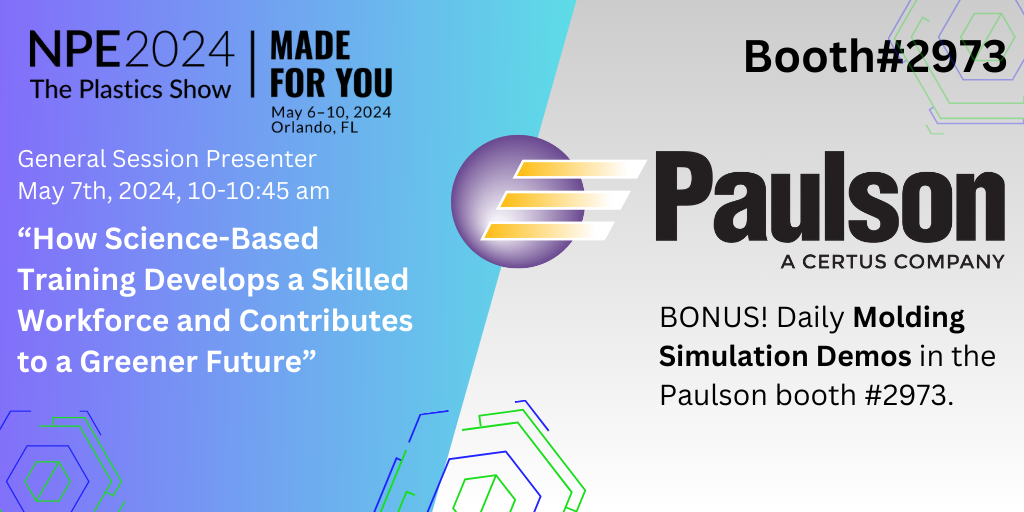 Paulson Training has been in the business of educating injection molders, extrusion personnel, blow molders, part designers and many other disciplines in the plastics industry for over 35 years.
Paulson Training has been in the business of educating injection molders, extrusion personnel, blow molders, part designers and many other disciplines in the plastics industry for over 35 years.
You learn quite a bit about what works and what doesn’t when you do something that long. This is the first of 2 blog posts summarizing the top 10 training mistakes we have seen plastics processors make.
If you want to talk about your training program, please give us a call at 1-800-826-1901 or email to info@paulsontraining.com. That said, here are the first 5 training mistakes in our top 10 list.
1. Not Training Consistently
Training is a “process”, not and “event”. Many companies confuse the idea of a formal training event or the on-going “learn from your mistakes” training program out on the injection molding, extrusion, or blow molding production floor, with a formal, structured training process. On-going training is absolutely critical to getting the most out of the time and money spent on training. We have seen it over and over. Plastics processors that train personnel continuously outperform those that don’t. It makes sense. How much do you remember of high school algebra? If you were given refresher training once a month on it, you would be quite competent. Same is true for injection molding skills, extrusion skills, or any other expertise needed in a plastics manufacturing plant.
2. Acting Too Casual About Training’s Importance
If employees do not understand the importance of your on-going training program, they won’t take it seriously. It becomes something to sit through not something to learn from. The right attitude about the importance of your company’s training program has to start from the top. And it is much better to fully explain why you are starting your training program rather that just announce it and post a training schedule. When people understand why they are doing something, they pay attention and get the most out of it. If the “why” is not explained to them, many will just tune out.
3. Training Too Fast
Learning does not happen overnight. The pace that new information is delivered (especially to adult learners) makes a huge difference in knowledge retention. If a company tries to compress training into too short of a time frame, it defeats the purpose. It takes time for the brain to make new connections and move information from short-term to long-term memory. There is no rush and it fact, it is very difficult to rush training with all but the most motivated adult learners. They will get frustrated and tune out.
4. Relying Solely on In-House Training Resources
This training mistake falls into the “But my business is different” category. If you feel you must develop all of your training in-house, you’re probably wasting time and money. There is plenty of foundational knowledge needed in every plastics process that can be taught with standardized training. Having said that, one great feature of Paulson’s programs is the ability to customize our interactive training to make it more targeted to the unique aspects of your production.
5. Not Properly Training New Hires
Newly hired employees that have little or no experience in injection molding, for example, will naturally feel a little intimidated by your production floor. Big machines, lots of noise, potentially dangers to the uninitiated… the list goes on. By giving new hires entry-level training in injection molding, you greatly enhance both their ability to be productive right out of the gate and also make them a safer employee. Safety training is so important for all plastics manufacturing processes that we recommend everyone go through recurrent safety training on a monthly basis.

 Paulson Training has been in the business of educating injection molders, extrusion personnel, blow molders, part designers and many other disciplines in the plastics industry for over 35 years.
Paulson Training has been in the business of educating injection molders, extrusion personnel, blow molders, part designers and many other disciplines in the plastics industry for over 35 years.
